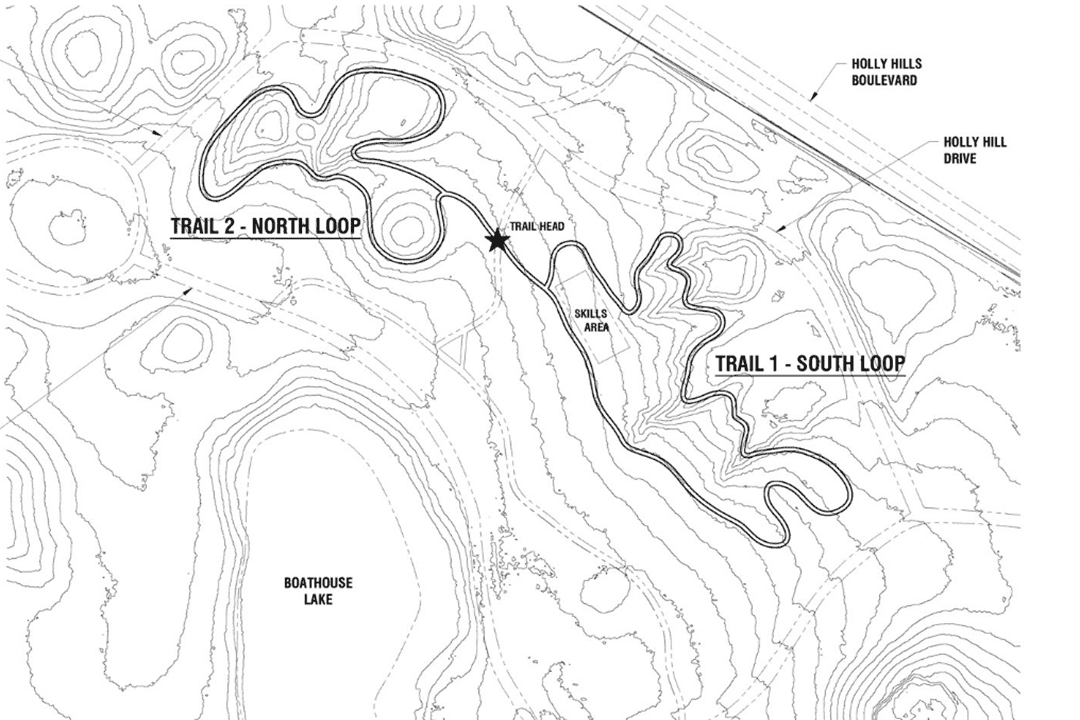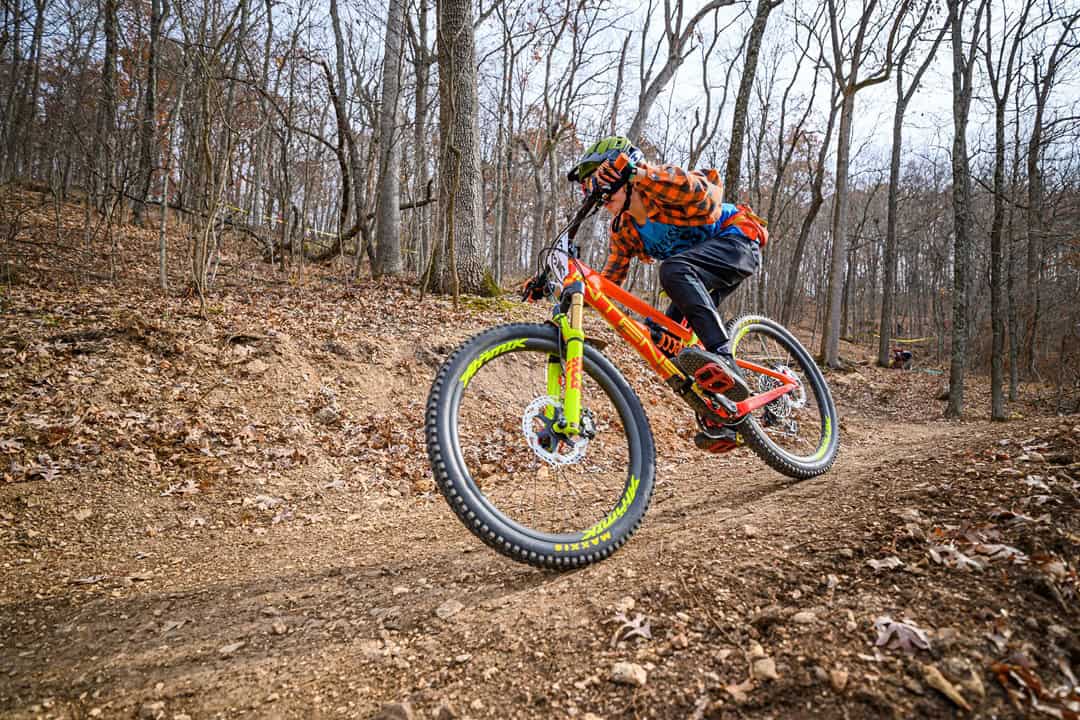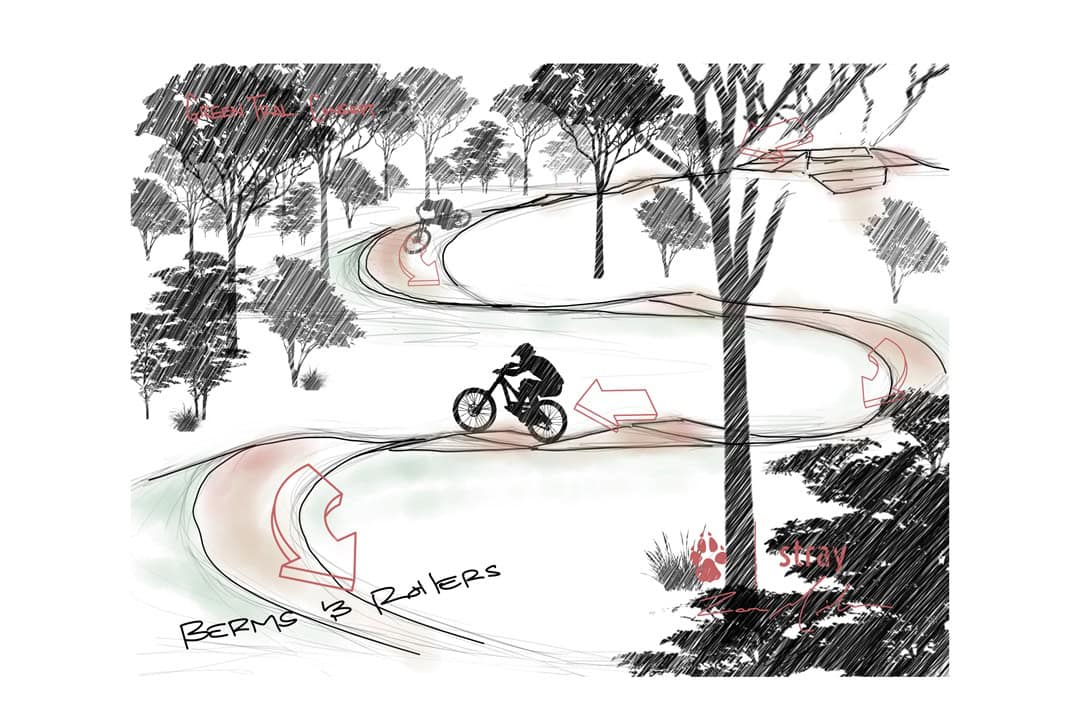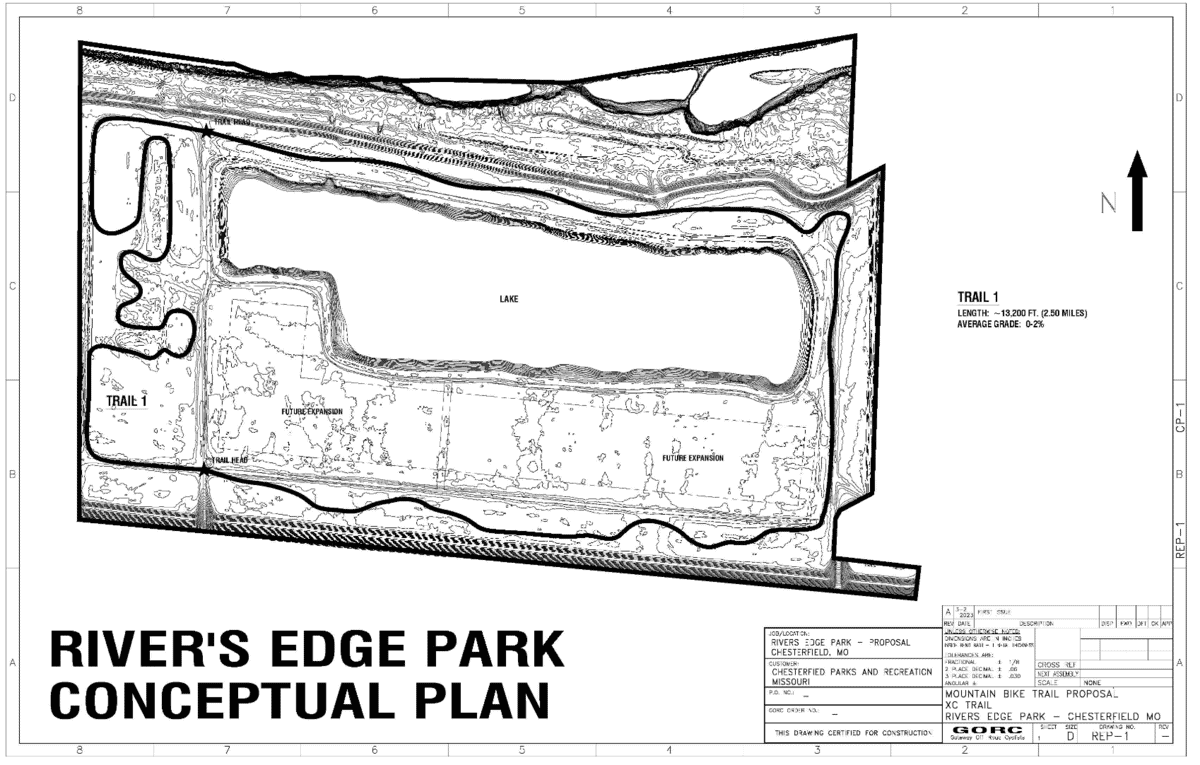Interest in mountain biking continues to spread in the St. Louis area, with improved technology, greater accessibility, and the five-year-old Missouri Interscholastic Cycling League (MICL) bringing more young athletes and their families to the sport.
As a result, this growth has spurred work on the development of even more mountain bike trails in new and existing parks. These changes are often driven by caring community members and local nonprofits like Gateway Off-Road Cyclists (GORC), an all-volunteer group that has spent tens of thousands of hours over the past 26 years advancing its mission and encouraging riders (and all outdoor enthusiasts) to give back by participating in trail builds and maintenance.
Here, we look at five projects underway in the region that are intended to help make mountain biking trails available to more users and provide options for a wider range of riding styles.
Carondelet Park
Established in 1875, Carondelet Park is the third largest park in St. Louis City. Already known as a bike-friendly oasis (it hosts the weekly Tuesday Night Worlds cycling series in summer), the 180-acre park will soon be home to the first sanctioned mountain bike trail within the city limits.
The new natural-surface path will consist of two loops and a connector with total mileage of about a mile. Offering a fast and flowy cross-country feel, the design will cater to kids, entry-level riders, and city dwellers seeking a dirt lap closer to home.
Developers hoped that, by late April, bike tires would be rolling on at least one of the two loops. (Editor’s note: This issue went to print in early April.)
A groundbreaking project such as this doesn’t come easily. As the saying goes, it takes a village, and this one was headed by Ryan Hanlon. A resident near Carondelet Park and the owner of Route 3 Films, he had worked with the Ozark Trail Association and GORC for years, traveling up to two hours out of the city to assist with their projects. But he kept thinking that, geographically, Carondelet would be a great place for a trail.

Map of the proposed Carondelet Park mountain bike trail. (GORC)
Hanlon had also noticed there are no trails within the City of St. Louis — that riders are leaving when they want to ride mountain bikes and spending their money where the trails lie. He began talking with people in the neighborhood and local community about his vision.
Around this time, the South City Otters was established as a MICL team. (MICL is the Missouri chapter of the National Interscholastic Cycling Association, or NICA, which currently has 31 chapters across the country.) For Hanlon, “this is the catalyst to open this trail, because now we have a city-based mountain bike team that could use it as their practice site.”
Hanlon started going to meetings and getting to know the parks commissioner and advisory boards. He, the South City Otters, Southside Cyclery, and GORC started a coalition, and they began building support for city approval of the park.
Because GORC has an established reputation for its work in the region, the coalition was able to provide multiple letters of support from other communities with testimonials of how building mountain bike trails had transformed their park and brought money into their community.
While the groundwork was being laid for securing approvals from the city, Hanlon began talking with Doug Bauer of DJM Ecological Services about the invasive species in the wooded areas of Carondelet Park. These conversations led to DJM donating $10,000 in services to remove the invasive species, which included honeysuckle and winter creeper. After four days of work, the woods were open and accessible, also allowing the native species to come back.
GORC scheduled the first trail build for mid-April, with plans to complete one loop. The second loop will be finished as time, weather, and volunteers allow but should be done by the start of the MICL race season, giving the South City Otters a place to ride nearby where its members live.
For trailblazer Hanlon, “All these things are possible. You can’t expect it to happen overnight. It takes sustained effort, passion, energy, and data.”
Matson Hill Park
Matson Hill Park, nestled on nearly 70 acres in the rolling hills of western St. Charles Country, is the location of the first trail ever built by GORC back in 1998 — and it just keeps getting better. According to GORC member Greg Ott, there have been a lot of improvements in the last three to four years.
In addition to the well-established 7.4 miles of cross-country trails, three mountain-bike-only downhill lines opened at Matson Hill last fall. Black Powder Run and Boone’s Burl are downhill flow trails with a variety of jumps and drops; both end in rock gardens, where things get more technical. The third downhill trail is Judgement Tree, which is a 99-percent dirt flow trail with fun features and a significant gap jump at the end.

Matson Hill Park downhill trail. (Alex Noguera)
Ott says these trails are “not only based on features but also on steepness — how fast you pick up speed. You’ll need to keep speed in check in some places.” He adds that the trails are rideable for most skill levels; ride-arounds let you bypass obstacles, and you can find a line through the rock garden that is not quite as difficult.
Most recently, St. Charles County Parks has approved the building of five enduro lines in the same area of Matson Hill where the downhill lines are. Slated to open in mid-April, Ott says these trails are “natural and minimal machine-built, mostly working with terrain and natural features and fall line to make it seem like you’re going downhill in woods. [There will be] some log jumps and rock drops.”
Ott says approval has also been granted to build two more flow lines and two hubs to connect all the trails. There will be a total of 10 trails once the project is complete, with 2.5 miles of downhill lines and approximately 2.5 miles of enduro lines, making Matson Hill the only park in the St. Louis region with as much trail variety available for use year-round.
Missouri Bluffs Park
St. Charles County Parks recently approved the construction of directional flow and multi-use trails at Missouri Bluffs Park, a new property that opened in 2023 at 18 Research Park Circle in Weldon Spring. According to Zac Milner of Stray Trails, these will be the first professionally built soft-surface trails in the area.
The project consists of two blue (intermediate) flow trails, each approximately a half-mile long and starting from a central hub on its own hill. There will also be two green (beginner) flow trails, with one of the lines building in some entry-level features for practicing progressive bike-handling skills. These lines will start from a hub but split off from the main single-track.

Rendering of a Missouri Bluffs flow line. (Stray Trails)
The project also includes two single-track trails approximately 1.5 miles each north to south, a couple of connectors, and some elaborate trailheads. All combined, the project calls for 3 miles of natural-surface trail on top of the bluff that looks out over the Missouri River.
Milner describes it as “good cross-country… multi-use trail,” but the climbs and descents add to the overall difficulty rating.
The connectors on the single-track will offer a route to the green flow trails, and once riders get to those trails, they can continue to the blues. There will also be access directly to the blue trails. Milner says the idea is to provide some separation of riders in the park, so they aren’t jammed up, preventing riders of different skill levels from running into each other.
Eureka Mountain Bike Park
The area’s first purpose-built, municipally-funded mountain bike venue, the Eureka Mountain Bike Park opened at The Timbers of Eureka Recreation Center in 2020. But not long after, there were drainage issues that significantly impacted its sustainability. Milner of Stray Trails was brought in to redo the drainage, repair some of the existing trails, and design additional ones.
According to Milner, “the main goal is rideability, and also maintenance and maintainability.” He says the hills were in rough shape and that park supervisors were having a hard time keeping the weeds back, as there was no tree canopy. Milner has addressed the drainage problems by adding culverts and building ditches to allow machinery to get in and do maintenance on each shape without impacting the trails.

Construction underway at Eureka Mountain Bike Park. (Stray Trails)
For the redesign, Milner is focusing on “proper flow trails.” He is working on trail alignment and bigger shapes, but he is also trying to spread people out, so they are not all in the same part of the park. Each of the major lines will have its own return trail.
Milner says that jumps will be mostly all-rider friendly, even if they are big. He plans to create shapes where riders can build speed and get air, and every jump will be a step-up with a big, round, soft case pad on the landing. The runs are one quarter- to one half-mile long and are “great for sessioning.” (In mountain biking terms, sessioning is repeating a particular section of trail until you master it.)
The crown jewel of the park, from the top, will include six jump features that come down to the bottom of the hill to create a “dirt roller coaster.” Milner describes it as a “flashy looking trail you can see when you come to the parking lot.”
The park redesign should be complete by the end of May, with the potential for expansion of the park and additional trails in 2025.
River’s Edge Park Trail
River’s Edge Park is 188 acres, with a 38 acre lake, located in the heart of Chesterfield Valley. Currently, there is a 1.6-mile crushed rock trail around the lake. The City of Chesterfield has partnered with GORC to expand this trail and build a biking and hiking trail in the wooded area west of the lake.
According to Kari Johnson, Chesterfield Recreation Superintendent, Phase 1 will add just over 1 mile of trail and should be completed by early summer, with additional mileage to be added in Phase 2.
Johnson says they are looking to build outdoor recreation programming as they partner with other organizations. James Coudright of SBR Bikes & Brews, a nearby bike and coffee shop located at The District, is excited about the potential of moving the dirt criterium mountain bike races to River’s Edge once the new trail is complete, and they are working with GORC to make the trail appropriate for the series.

Map of the proposed River’s Edge Park mountain bike trail. (GORC)
The new mountain bike trail will be mostly flat, with some twists but also a lot of room for building speed. Perfect for the dirt crits, says Coudright. (SBR currently hosts the weekly summer race series in Valley Park.)
All of these projects have been made possible and continue to be maintained by trail champions, community leaders, and members of GORC. Their vision and grassroots efforts have brought to fruition a wide array of experiences for mountain bikers, and their impact goes well beyond tires on a trail.
As Coudright says, “When we ride bikes, the times we remember and the experiences we remember are when we are with friends, the time on the bike, and what we do before and after the ride — it’s an experience beyond more than just dirt.”
Author: Missy Phegley is a regular contributor to Terrain Magazine.
Top Image: Matson Hill Park downhill trail. (Alex Noguera)


Leave A Comment